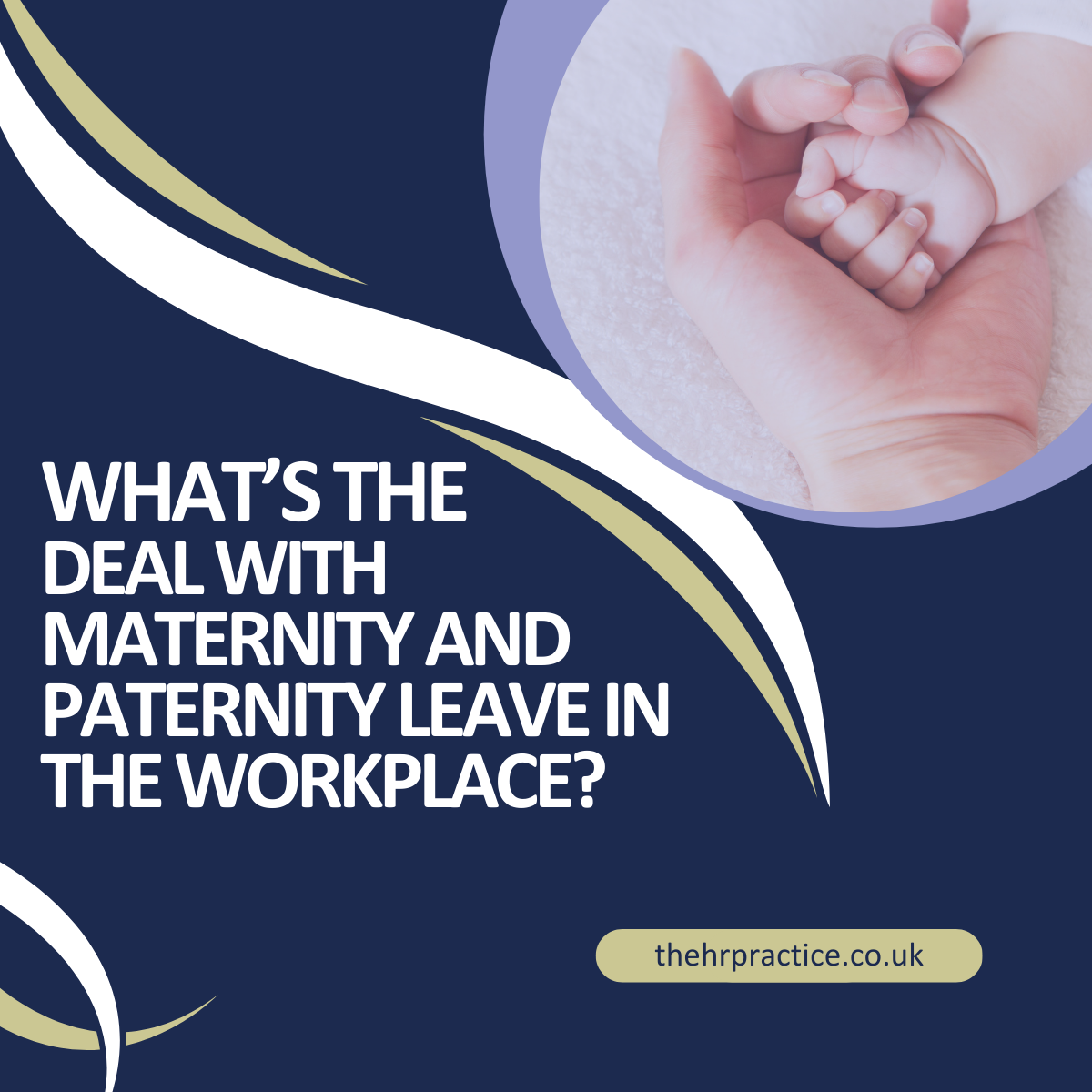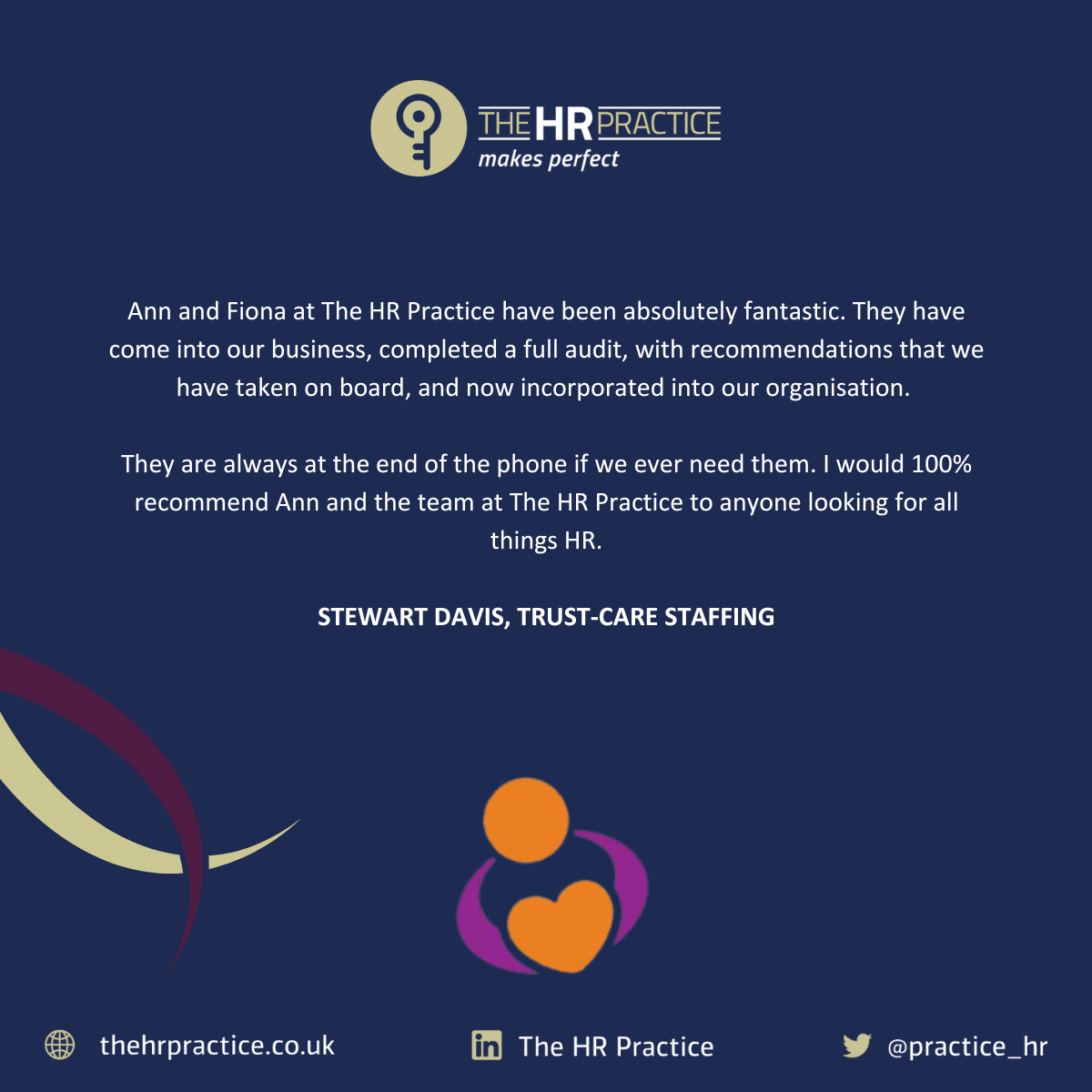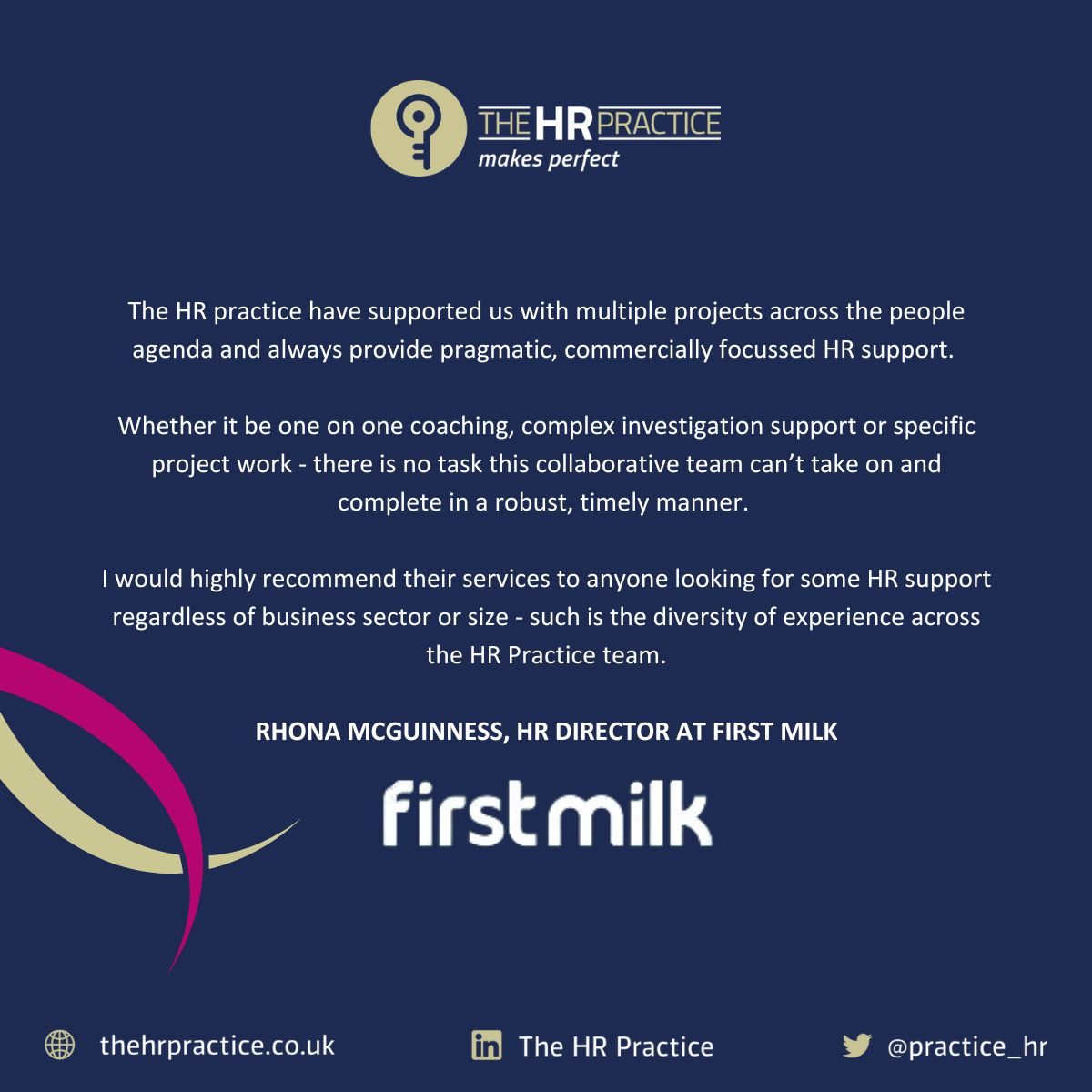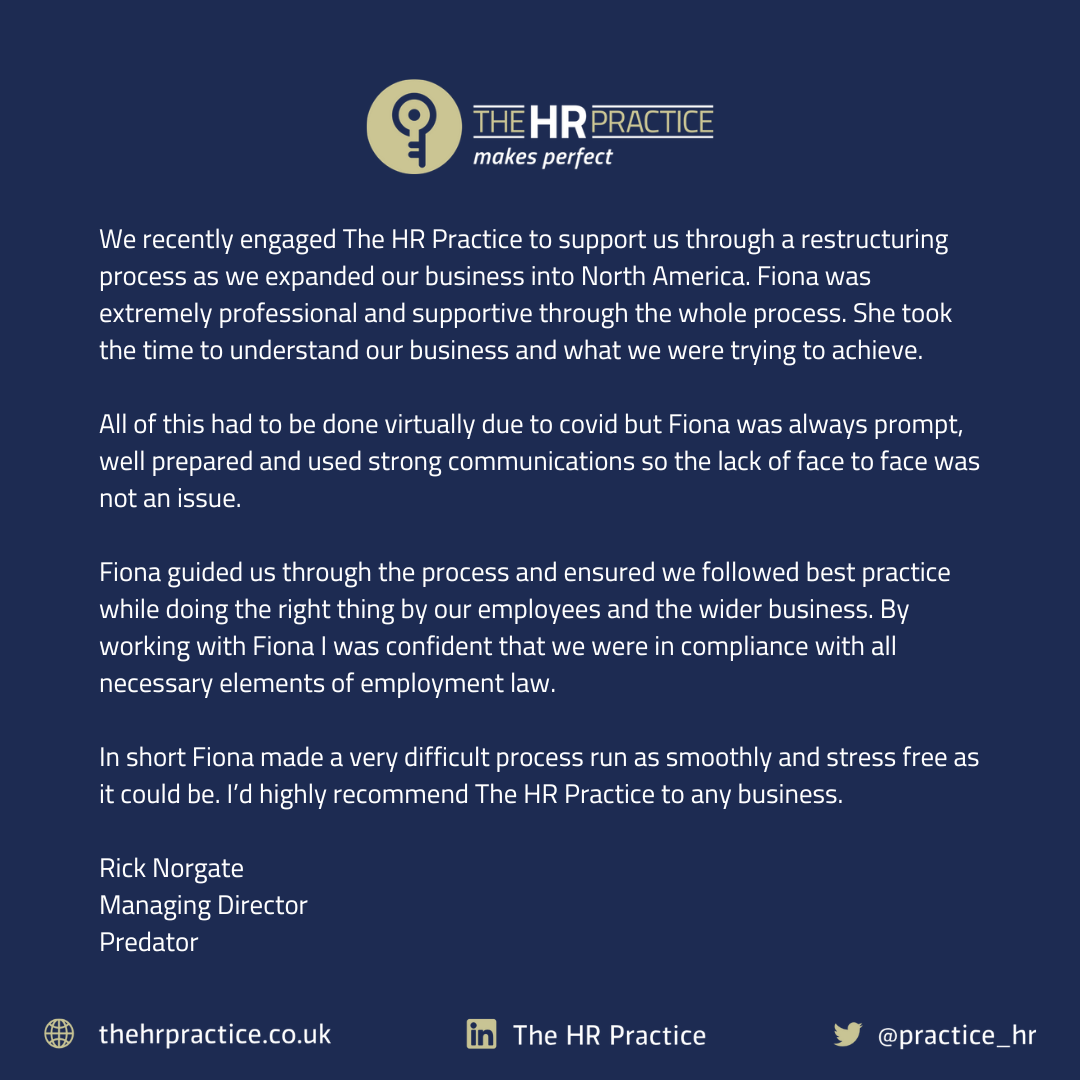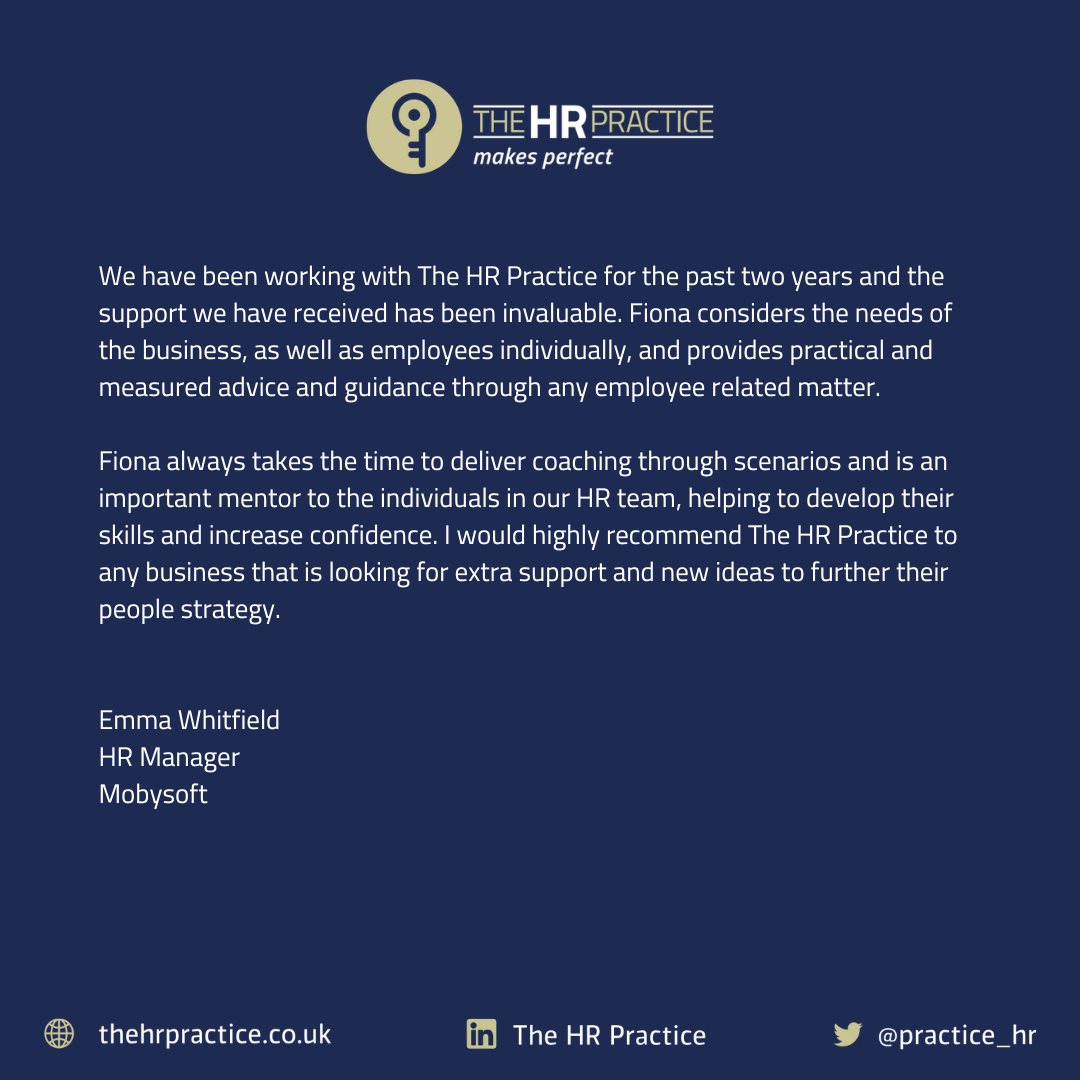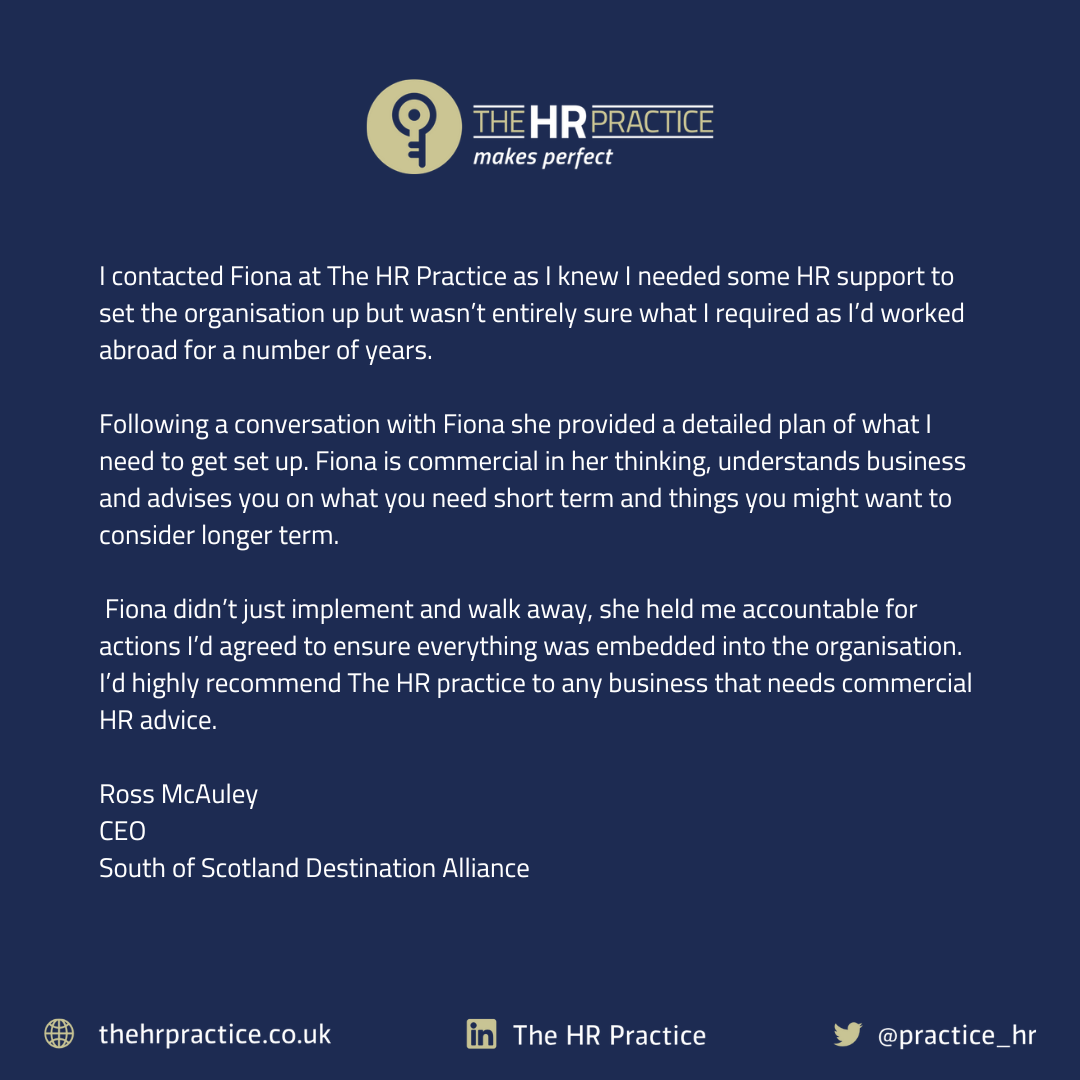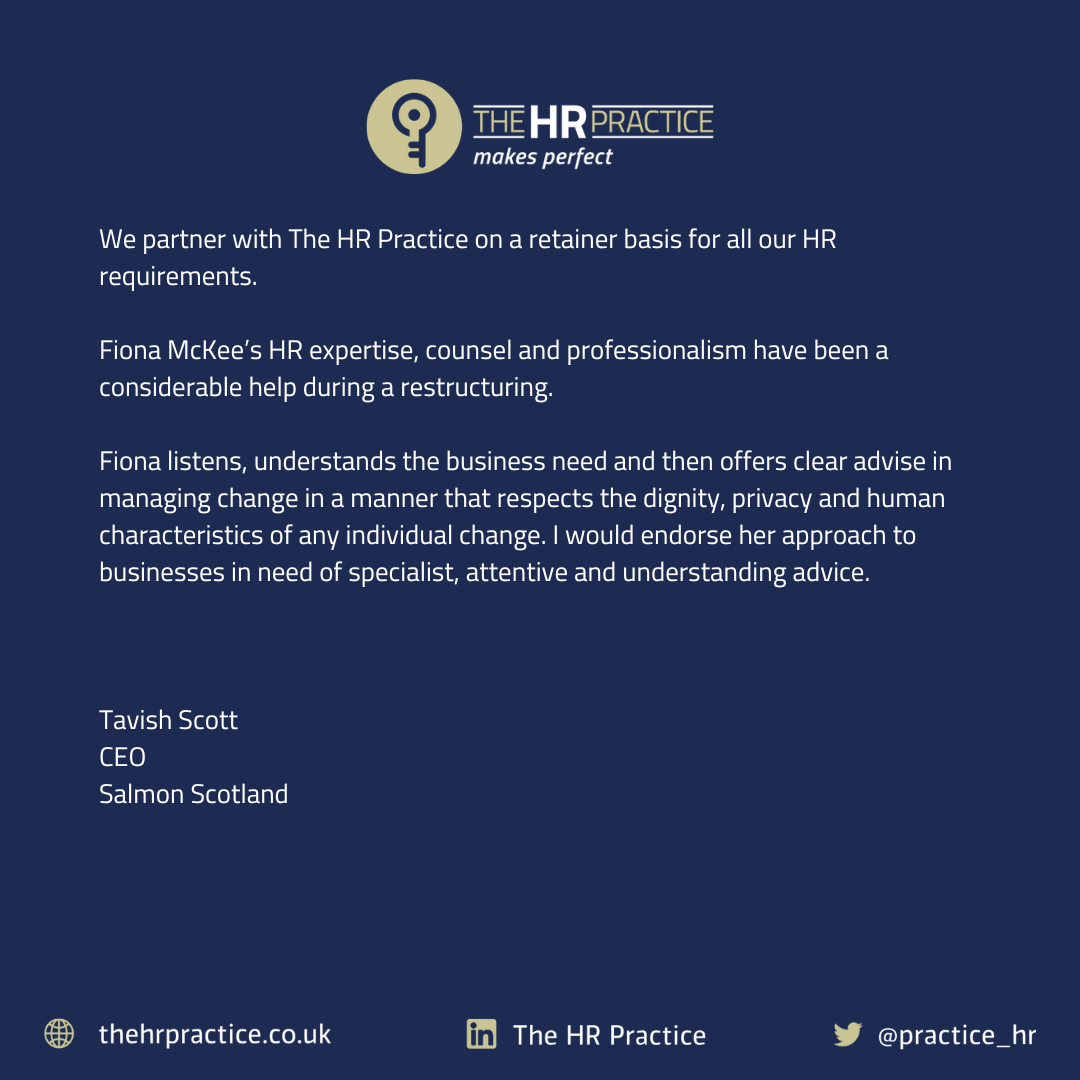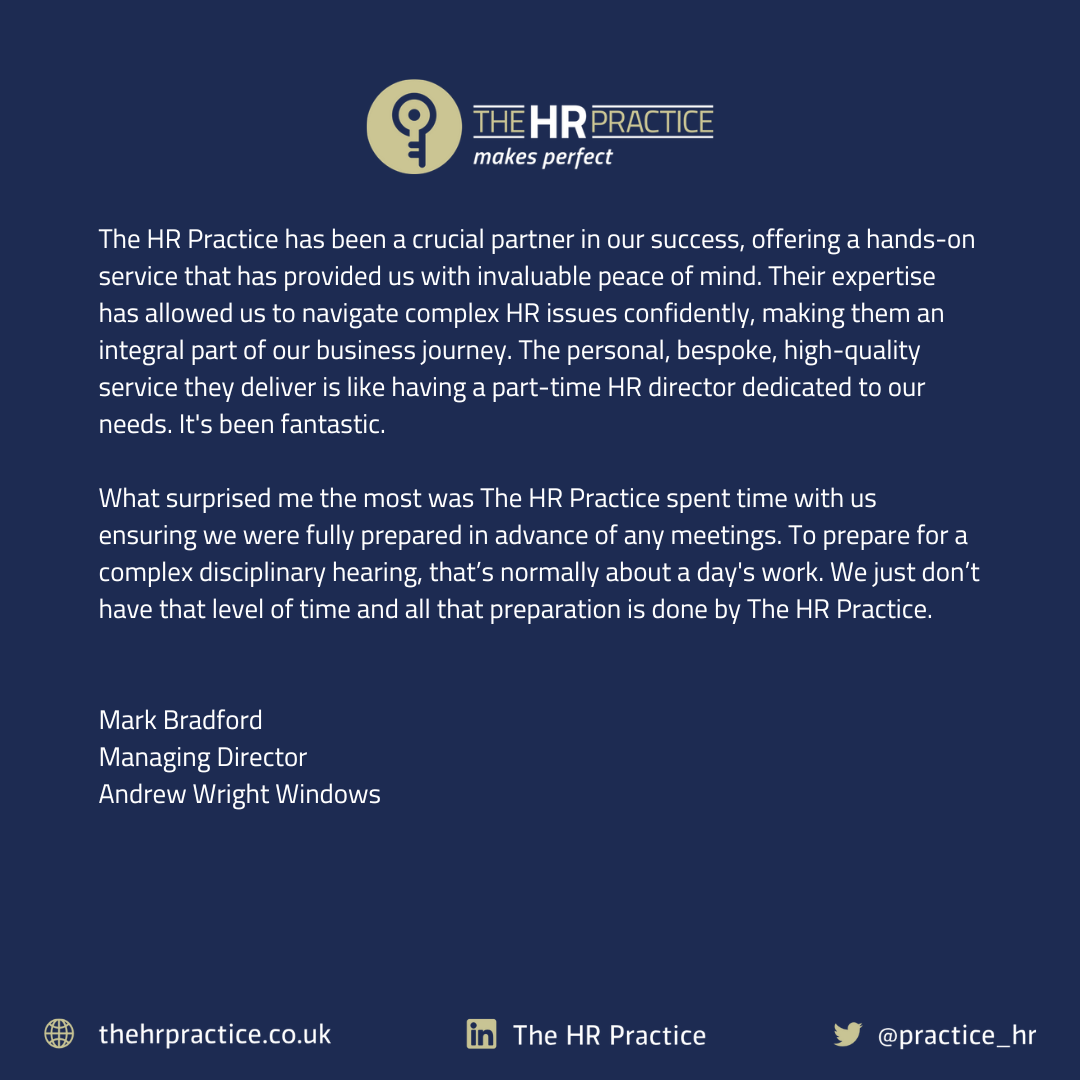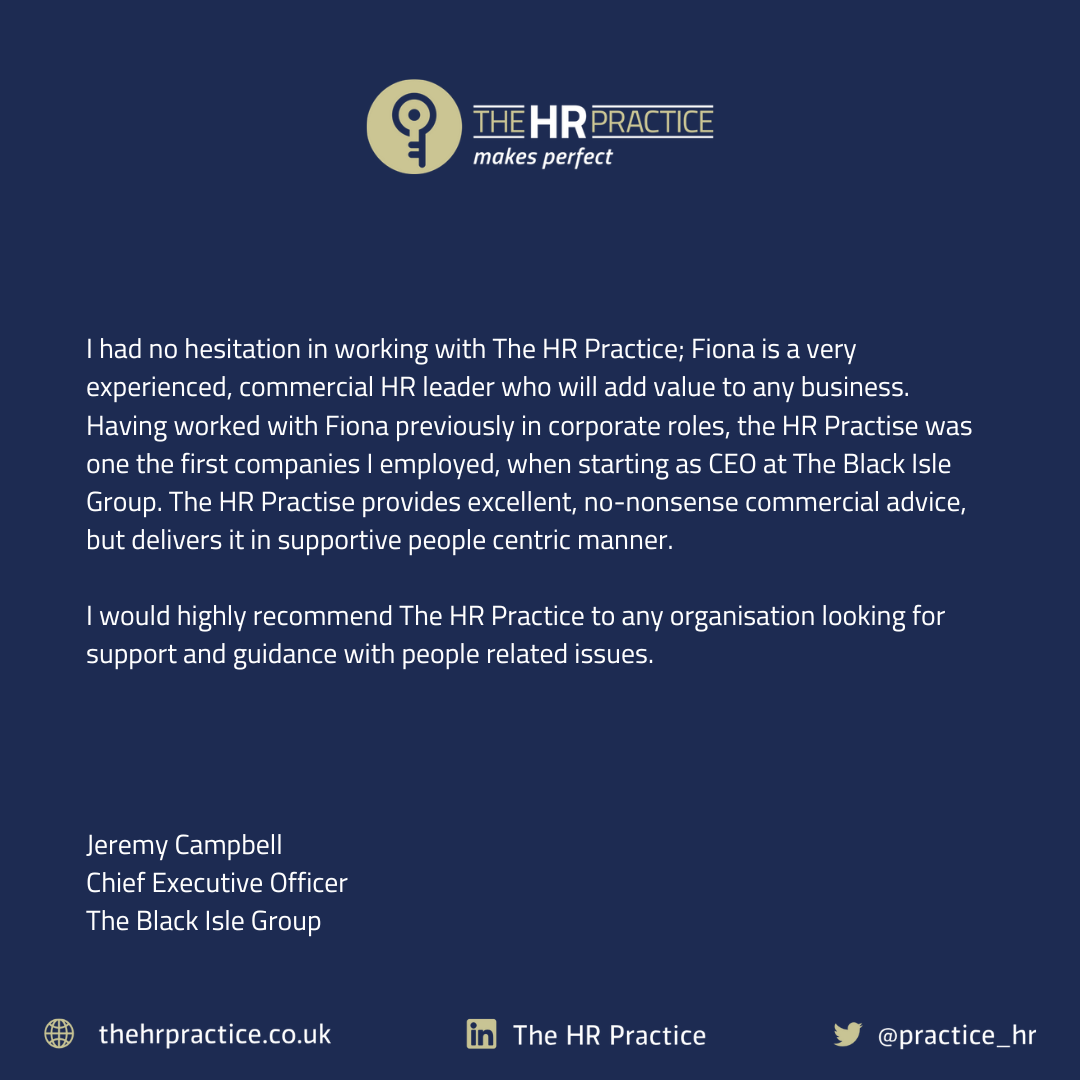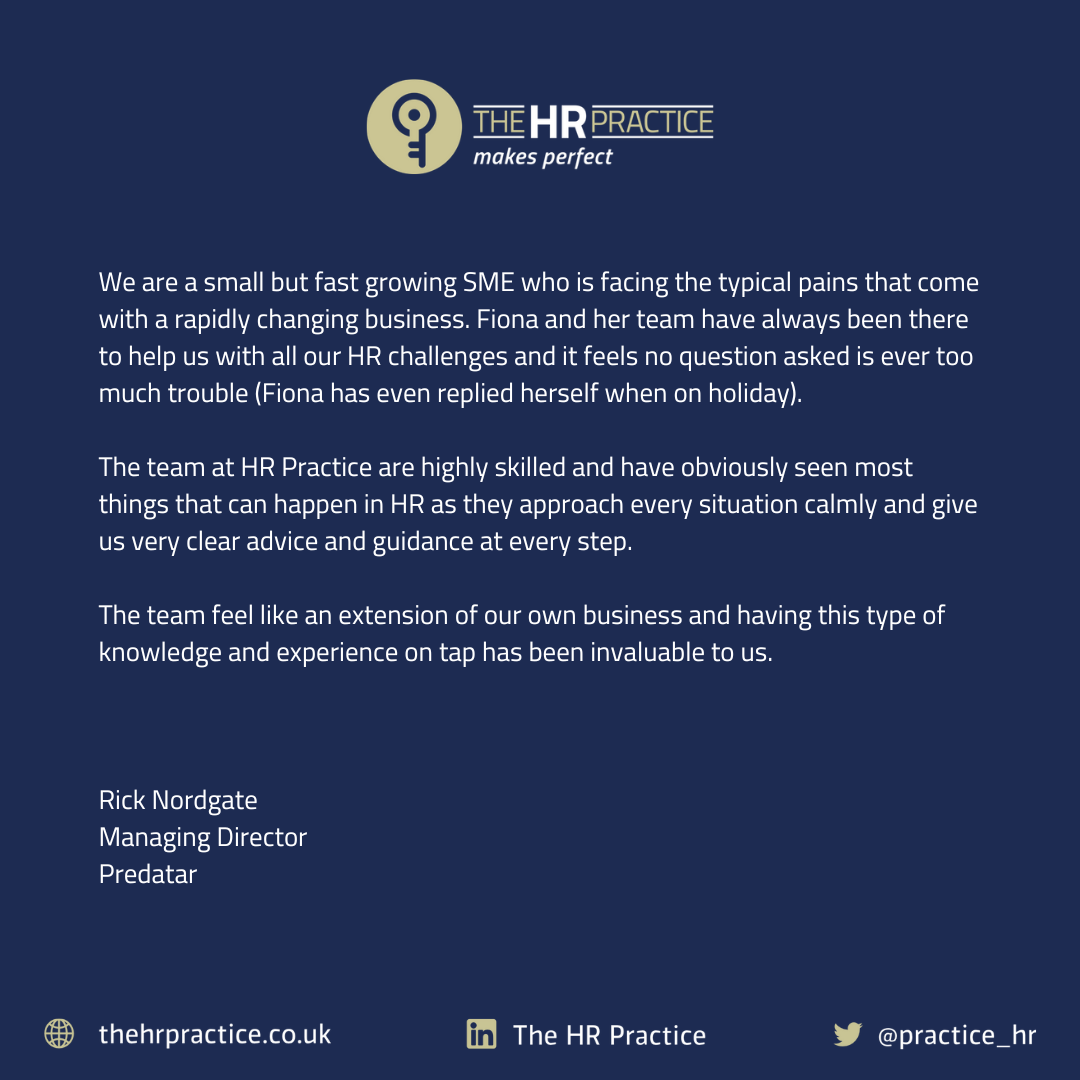Advice for Employers Managing Parental Leave with Confidence and Compliance
Supporting new parents at work is not only a legal responsibility, but also an opportunity to build a workplace culture based on trust, flexibility, and fairness.
At The HR Practice, we’re often asked by employers how best to manage maternity, paternity, and shared parental leave. Below are the most common areas of confusion, along with guidance on how to stay compliant and supportive.
When should an employee notify you they are pregnant?
By law, employees must inform you by the 15th week before the expected week of childbirth. That said, creating an open and supportive workplace can encourage earlier disclosure, which helps with planning and ensures health and safety assessments can be carried out promptly.
What are your responsibilities for paternity leave?
Eligible employees are entitled to up to two weeks of Statutory Paternity Leave. This can be taken in one block or as two consecutive weeks within 52 weeks of the birth or adoption. Employers are responsible for processing these requests correctly and ensuring Statutory Paternity Pay is handled in line with the rules.
How does Shared Parental Leave work?
Shared Parental Leave (SPL) allows parents to share up to 50 weeks of leave and 37 weeks of pay. It can be more complex to manage, so it’s important that your policies are clear and up to date. Managers should understand the process and ensure all requests are documented, consistent, and supported.
Can an employee on maternity leave be made redundant?
Yes, but only in very specific circumstances. There must be a genuine redundancy situation. You must also offer any suitable alternative employment if it is available. This is an area where careful planning and legal advice is essential to avoid potential claims.
Are you prepared for flexible working requests?
Since April 2024, all employees have the right to request flexible working from day one. As an employer, you must consider requests fairly and provide a written outcome. It’s not about saying yes to everything, but engaging in open, fair conversations about what is possible.
Tips for managing maternity and paternity leave well
-
Start with a clear handover process
-
Offer KIT (Keeping in Touch) days where appropriate
-
Let employees lead communication during leave
-
Provide support during the return to work
-
Train managers so they understand your policies and obligations
Final thoughts from Fiona
Good maternity and paternity support is built on three things: clarity, compassion, and compliance. Employees who feel supported are more likely to return and stay. Those who don’t may leave, and the cost of replacing them can be significant.
If you’re not sure whether your current policies or processes are fit for purpose, we’re here to help.
Need advice on parental leave or HR compliance?
Get in touch with The HR Practice

